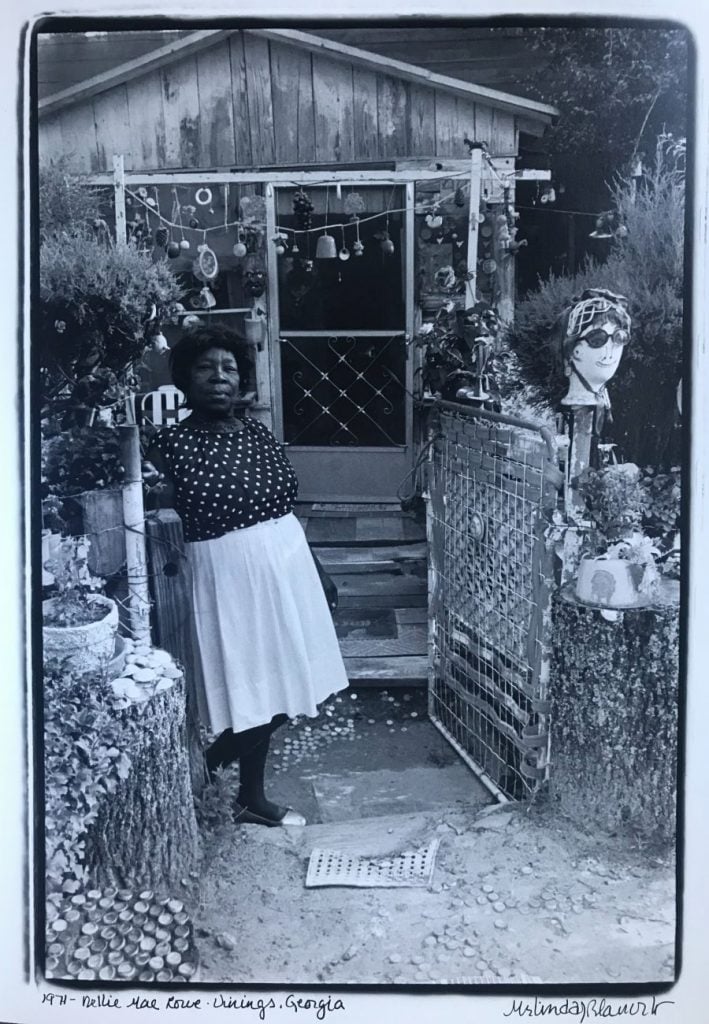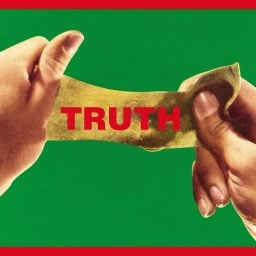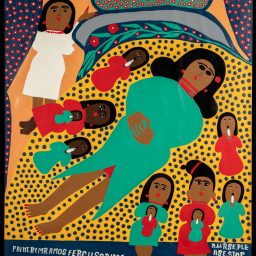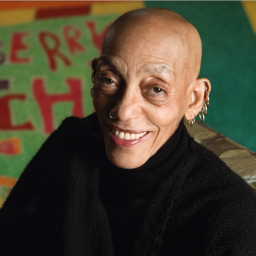By the end of her life, the self-taught artist Nellie Mae Rowe (1900–1982) had been widely recognized for her unique artistic practice, finding both institutional and commercial success for her drawings and sculptures made from all manner of household materials. But a new exhibition at the High Museum of Art in Atlanta is the Georgia-born artist’s first major exhibition in 20 years.
“People here know how brilliant she was,” Katherine Jentleson, the High’s curator of folk and self-taught art, told Artnet News. “I really want to make her name known and her art appreciated outside of Atlanta.”
To that end, after it closes at the High in January, “Really Free: The Radical Art of Nellie Mae Rowe” will embark on a national tour with the Art Bridges Foundation through 2024 (venues have not yet been announced). The exhibition is drawn largely from the museum’s deep holdings of the artist’s work, including a 130-piece gift from the dealer Judith Alexander, who was the first in the art world to champion Rowe.
Born in 1900 in the then-rural town of Fayetteville, Georgia, Rowe only dedicated herself to art-making late in life.
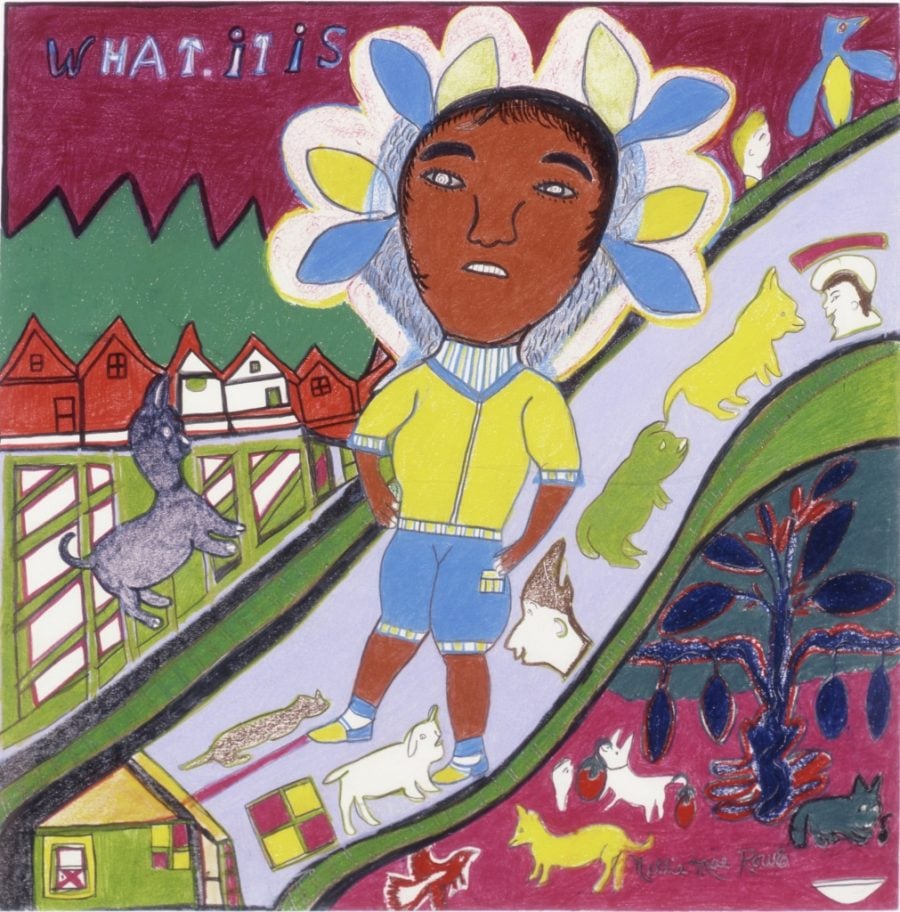
Nellie Mae Rowe, What It Is (1978–82). Collection of the High Museum of Art, Atlanta, gift of Judith Alexander.
“When she was a little girl growing up on a farm, she would take all the time she could find in her days to make art. She would make dolls out of scraps of dirty laundry, she would make drawings,” Jentleson said. “Like many self-taught artists, Rowe was somebody who knew from childhood that she had a gift.”
But Rowe married young, and she worked in domestic labor, cleaning the home of a white family for 30 years. It wasn’t until her second husband died in in 1948, and her employers died in the late 1960s, that Rowe began revisiting that early passion.
By 1971, Rowe had transformed her home in suburban Vinings into an elaborate art installation she called her “Playhouse,” decorating the outside with her multimedia works.
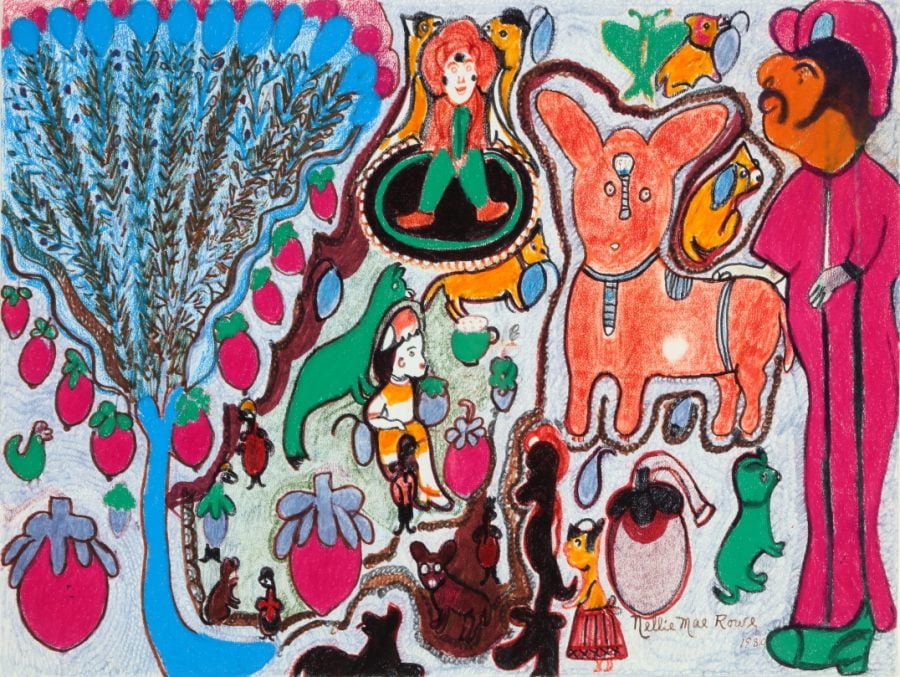
Nellie Mae Rowe, Untitled (Dandy), 1978–82. Collection of the High Museum of Art, Atlanta, gift of Harvie and Charles Abney.
“She had mulberry trees and dogwood trees and urns filled with other flowering plants, and she would embellish those natural elements with artificial flowers so she had blooms year-round,” Jentleson said. “She hung the trees and the roofline with clotheslines she turned into garlands with ornaments and plastic fruit and baby toys, creating this shimmering, moving site-scape within the yard.”
“There were tons of chairs scattered all around the yard where people could sit, but some were decorated in ways that would impede sitting, with these thronelike installations,” Jentleson added. “Rowe would affix all types of things to the fence, like dolls’ heads and chewing-gum sculptures [that] she would embed with marbles and beads and other decorative things. She covered every surface with different decorative arrangements, laying seashells on the stumps of old trees.”
Some people responded negatively—Rowe’s home was vandalized, and she was accused of witchcraft. But after local press caught wind of her creative endeavor, the Playhouse became something of a tourist attraction, even keeping a series of guestbooks for visitors to sign.
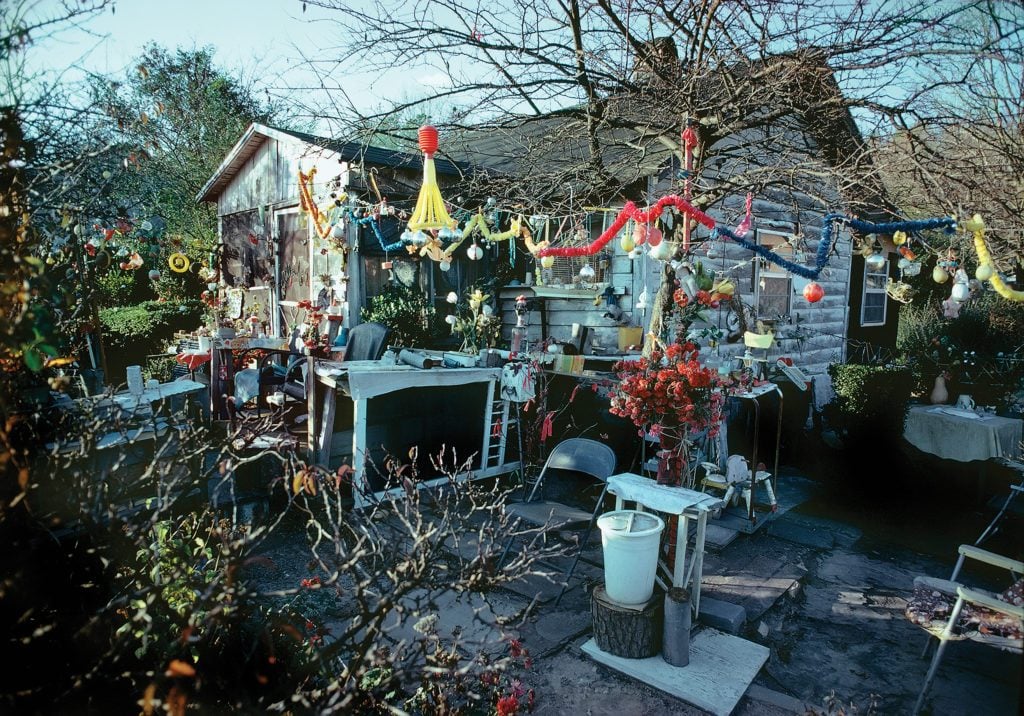
Lucinda Bunnen, Nellie Mae Rowe’s House (1971). Photo ©Lucinda Bunnen, collection of the artist, courtesy of the High Museum of Art, Atlanta.
Alexander began working with Rowe after encountering her in a 1978 folk art exhibition at the Atlanta Historical Society. Representation was a turning point for Rowe, with Alexander providing large-format acid-free paper for the artist to work on.
“It allows her this new freedom,” Jentleson said. “With these large, flat surfaces, that’s when her imagination just exploded onto paper. Rowe starts to create these rich compositions that are much more like quilts, decentralized with all of these interlocking forms that harmonize together. There’s so much symbolism and narrative embedded in every single work.”
Those drawings represent the bulk of Rowe’s surviving works, since the Playhouse was dismantled after her death. (The exhibition includes instead two large-scale miniature reimagining of the home and its interior, created by New York documentary firm Open Dox for the forthcoming This World Is Not My Own.)
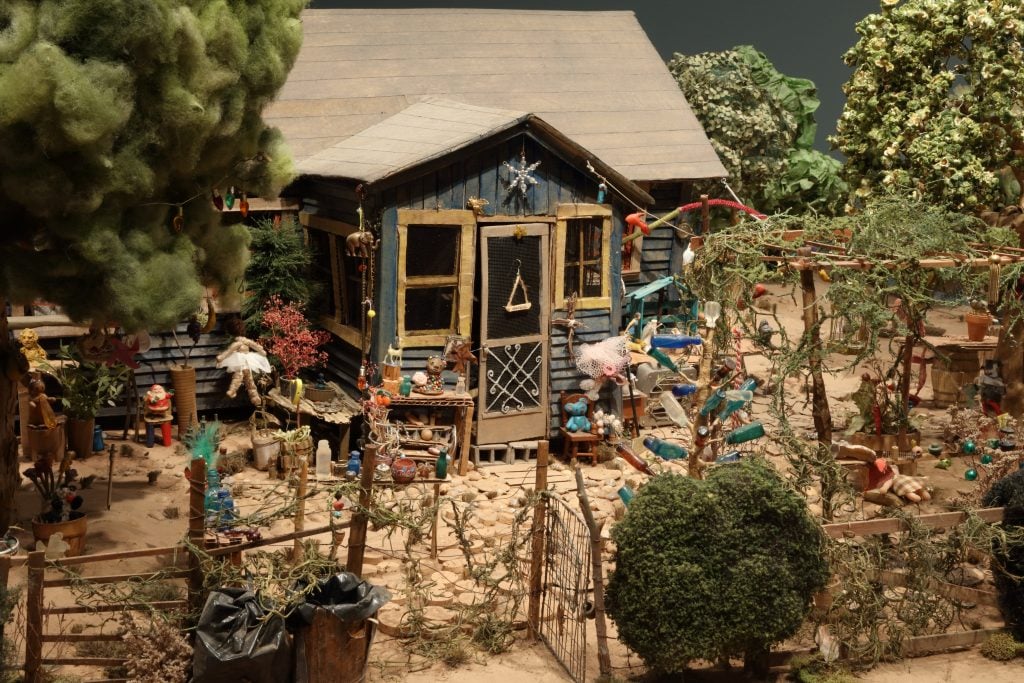
Installation view of “Really Free: The Radical Art of Nellie Mae Rowe.” Photo Credit: Mike Jensen. Courtesy of the High Museum of Art.
In Rowe’s era, “Assemblage and installation art was just beginning to be understood in the art world,” Jentleson said. “It was a practice that was only starting to be acknowledged as something that was important. I think it was too soon, unfortunately. When she passed, there wasn’t a precedent [for preservation].”
And the unique nature of the Playhouse also has complicated Rowe’s legacy.
“Part of why Rowe hasn’t been taken as seriously as she should have been was that she framed her work as play and returning to her girlhood,” Jentleson said. “She’s been as unfairly infantilized. That’s something that has to do with her identity, with being a woman and being Black. We’re willing to let so many white male artists reclaim their childhood and embrace this state of liberated play and exploration. That’s a sophisticated thing for Picasso or Kandinsky, but with Rowe, it’s held her back, and that’s something that should change.”
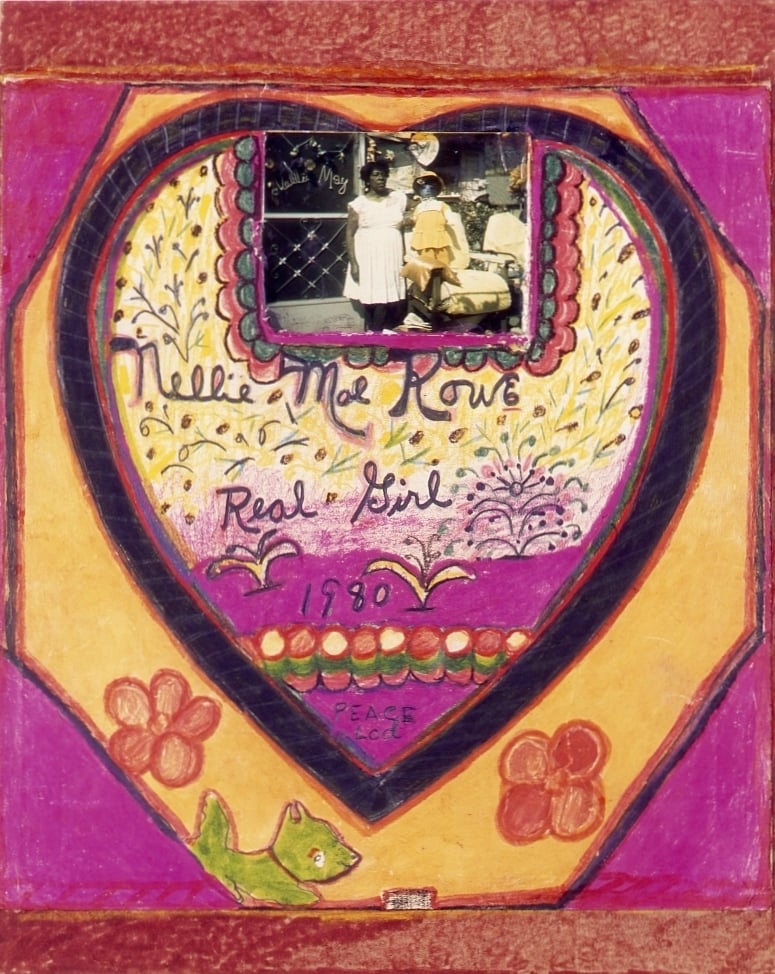
Nellie Mae Rowe, Real Girl (1980). Collection of the High Museum of Art, Atlanta, gift of Judith Alexander.
Though much of Rowe’s work was decorative, she was also deeply engaged with the social and political issues of the day. She made a series of drawings responding to the Atlanta child murders between 1979 and 1981, which targeted Black adolescents. Another work was a tribute to Black women getting the right to vote in Atlanta in 1965.
“Working on this show during 2020 was a very profound experience. The Black Lives Matter movement and the urgency around acknowledging racial violence in this country provided a different lens through which I started seeing Rowe’s work and her experience,” Jentleson said. “I hope the show is going recontextualize her as a very significant Black feminist artist…. She was taking a very bold stance, demanding visibility for herself and her artwork.”
“Really Free: The Radical Art of Nellie Mae Rowe” is on view at the High Museum of Art, 1280 Peachtree Street NE, Atlanta, Georgia, September 3, 2021–January 9, 2022.
